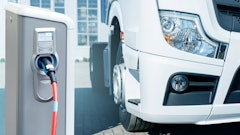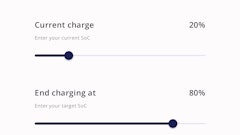
Businesses with heavy duty transportation fleets are no strangers to economic fluctuations. These companies have experienced the ripple effects of market downturns, supply chain disruptions, and shifting consumer demand. In such uncertain times, flexibility becomes a key factor of success. Just as companies in a variety of industries adjust production schedules, inventory levels, and sourcing strategies to respond to changing market conditions, organizations with transportation fleets must adapt financial strategies, budgeting/forecasts, and operational approaches to mitigate the impact of volatility in the economy.
Where the economy stands today
Depending on the day or even the week, the economy is either strengthening or weakening. The same can be said for the direction inflation is headed, as the last several CPI reports have gone in different directions, leaving many fleet executives scratching their heads and wondering about the right strategy for their business. Regardless of this whiplash approach to understanding the state of the economy, many of today’s industry challenges feel familiar to those of the last few years, such as driver shortages, rising insurance rates, and an economy with persistently high interest rates. And because of these challenges, it has never been more critical for transportation fleets to rely on a KPI-driven asset management plan that focuses on shortening equipment life cycles to create the lowest possible Total Cost of Ownership (TCO).
There is some good news perhaps. Industry analysts at are expecting U.S. freight fundamentals to improve this year. Entering 2024, freight demand was below typical trends, but industry observers expect it to recover, driven largely by continued consumer spending and subsequent retail sales activity, according to ACT. What’s more, organizations with private fleets are faring better than for-hire carriers, especially as these businesses face harsher realities of the difficult economy this year.
Effective planning can significantly impact fleets
It is also important to note that a growing number of economists believe the Fed is feeling a higher level of confidence that interest rates could begin to decline at some point this year. This would mark an important step for any fleets planning to invest in new trucks and equipment, especially as the cost of equipment has become a serious issue for many. Immediately following the pandemic, supply chains made availability a major issue. Today it is no longer about availability, and instead more about the cost of entry into new equipment.
This is a fundamental reason why fleets need to have a strategic, multi-year procurement plan established around a methodical and disciplined approach to life cycle management. This multi-faceted plan is the cornerstone for achieving more business agility, allowing fleets to adapt to changing market conditions, which allows organizations to inject more flexibility into the decisions for truck acquisition while assigning stronger fundamentals toward managing the organization’s TCO and bottom line.
What makes data analytics essential in 2024
Fleets have talked about using data for many years now, but having data and implementing data for organizational decisions are two entirely different conversations. One area of data that continues to grab many headlines is the use of artificial intelligence (AI). And while there is a lot of hype around AI, it is data that drives all of these sophisticated tools. If inaccurate data is used for AI systems, outcomes detrimental to any organization’s business strategy will follow.
Today, the use of this data has expanded to also include predictive modeling, which companies scrutinize to plan out their fleets’ life cycles. This data has been proven to achieve desirable goals, and fleets that are leveraging this approach are some of the most competitively aligned in the industry today and ready to weather any changing market conditions.
More chatter about lowering emissions without the rush toward BEV
A scan of the headlines in any news outlet can provide a glimpse that the need to lower emissions is still a hot item for all industries, especially transportation fleets. However, the conversation is no longer just about the rush toward electrified trucks. Many fleets are now basing organizational decisions around sustainability strategies, but rather than solely adopting electric trucks they are instead focusing on emissions reduction strategies as opposed to simply going “all in” on alternative fuel equipment. Clean diesel and even hydrogen are much more in focus today, and they are both playing a significant role in company's decisioning for emissions reduction strategies.
In a benchmarking survey two years ago, Fleet Advantage asked which type of alternate fuel trucks fleets are most interested in. In that survey, 65% of respondents said they were most interested in electric trucks, while 15% cited hydrogen and 25% CNG. Forty-five percent of the respondents also noted that the time frame to deploy alternative fuel trucks would be 5-10 years.
Almost one year later, those numbers are shifting, with 33.3% indicating EV over the next 5-7 years (29.6% saying another 10 years), and 38.5% indicating hydrogen. This timetable for electric truck adoption continues to change, as just two years ago the majority (54%) said they didn’t plan to deploy electric trucks for 5-10 years.
Because of the increased focus on legislation that mandates the movement toward zero-emission vehicles, fleets are watching closely to see what impact these mandates will have on acquisition plans. According to the survey, 59% of respondents are either expediting their procurement plans because of CARB pre-buy, or are closely monitoring to see how it may alter their plans. The timeline and emphasis on CARB pre-buy continues to shift. According to ACT Research, the new standards will result in the largest Class 8 truck prebuy ever leading up to 2027, beginning in 2025 into 2026, with the cost of diesel trucks increasing between $25,000 and $30,000 more per unit, which is another driving reason why fleets must view flexibility as a business strategy, not just a fad.
As fleets ponder their strategies for the balance of the year, many will certainly be focused on interest rates and how the cost of money will affect their organizations. They must rely on proven data so they can make smart, informed decisions that will have long-term benefits without financial missteps. They must have a larger focus on their business above and beyond what the Fed’s actions are. They must manage their life cycles with the right strategy and multi-year procurement plan. With this in mind, fleets will continue to understand that as they improve the performance of their trucks, they will improve the health of their business while also achieving their sustainability measures in 2024.


























